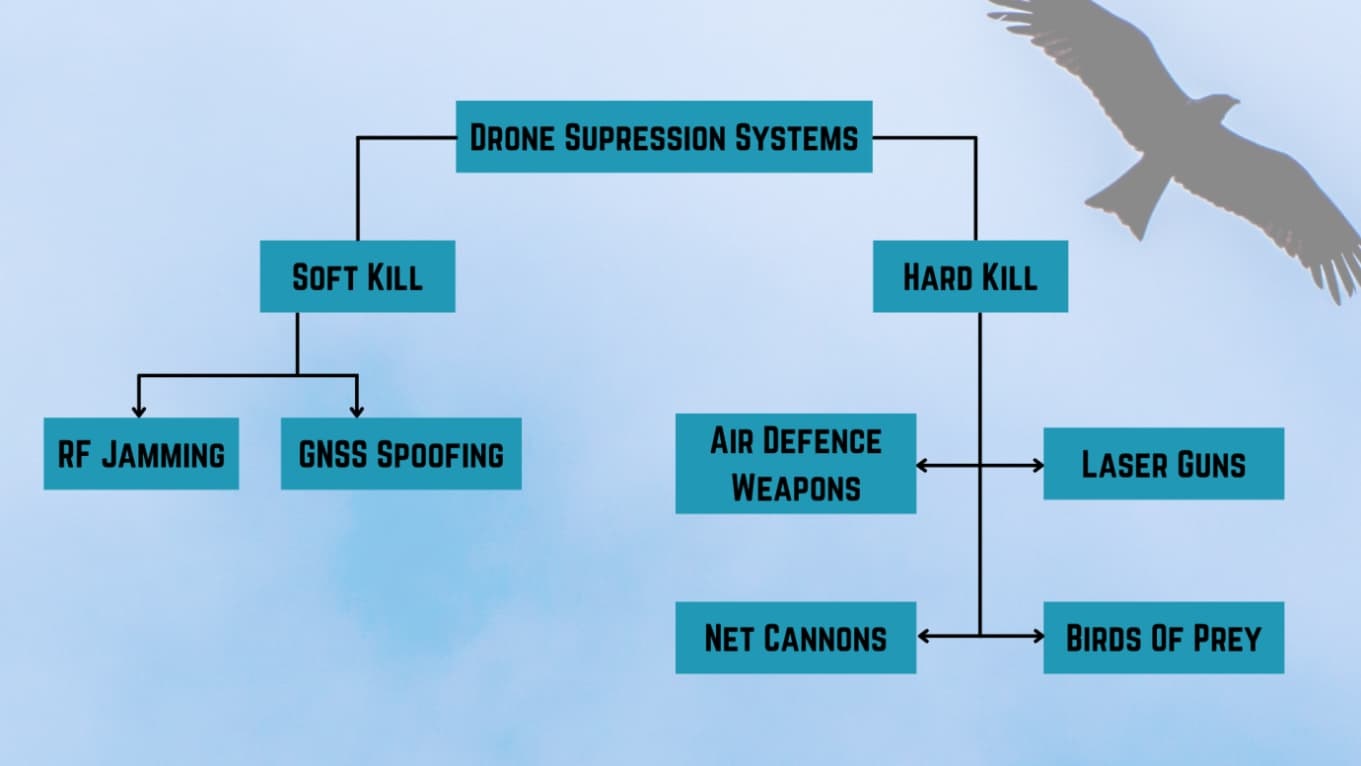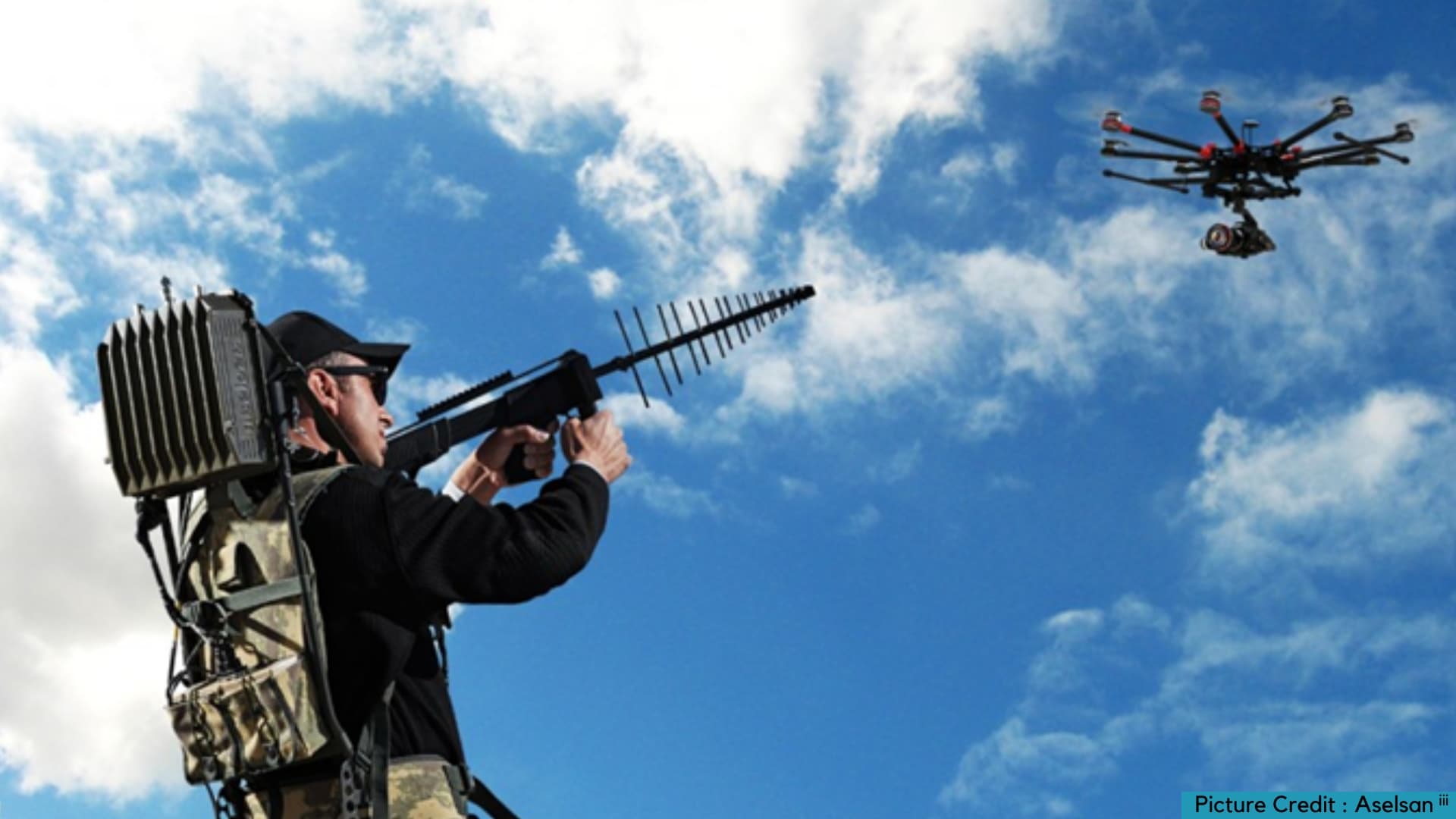In the previous articles, we have covered Drone Classification and Detection techniques. Today we will read about Drone Neutralising or suppressing technologies, and keep it specific to Soft Kill Systems.
Drones can be suppressed by denying it access to a protected zone through soft kill or hard kill measures. Soft kill implies that the drone is not physically impeded or hit but neutralised using jamming. Hard Kill implies that the drone is physically destroyed or neutralised through some means.

Soft Kill Measures
- RF Jamming. The best option to neutralise a drone would be by disrupting the command and control link. This would imply that the anti-drone jammer must overpower the GCS uplink signal. Analog modulated links need a Jammer to Signal ratio (J/S) of at least 10 dB. The duty cycle of the Jammer also needs to be 100%. This is on account of the human in the loop who can fill in the blanks adaptively especially in military communications where message formats are quite rigid. For digital modulated links a J/S ratio of 0 DB and a duty cycle of 33% is usually sufficient to ensure a bit error rate greater than 50%. On disruption of the command/ control link the UAV may do one of three things depending on its sophistication. First, the basic version would start descending in a gradual freefall. Most commercial UAVs are likely to be neutralised in this manner. Next, it could use its current location from the onboard GNSS receiver to determine the shortest path to return home. Finally, it could be programmed to retrace its path home even without using the GNSS. This feature is generally available only in military UAVs. Therefore, it would also be necessary to jam the GNSS receiver on-board the UAV to fully disable the UAV. Jamming FH and DS links

would need to take into account the spreading gains offered by spread spectrum technology and the J/S Ratio would have to be at least 30 dB. TRD and HP Wust offer RF Jammers.

- GNSS Spoofing. Drones normally rely on the latitude and longitude coordinates continuously updated by the GNSS receiver on board for navigation. If the precise location of the drone is known either through Radar or RF triangulation, then it would be possible to trick the drone bygradually supplanting the GNSS location information with spoofed information so that it eventually lands in an area of the anti-drone system’s choosing once control over the drone is gained. Centum offers a GNSS spoofer.To conclude, drones threats can be prioritised to be engaged using soft kill measures or hard kill measures. For situations such as VIP Security, Drone threats in urban areas, critical infrastructures, and overall homeland security – Soft Kill Measures are recommended. In the next article we will cover Hard Kill Systems – which has an interesting byte on Birds of Prey which can be trained to neutralise drones among other methods.